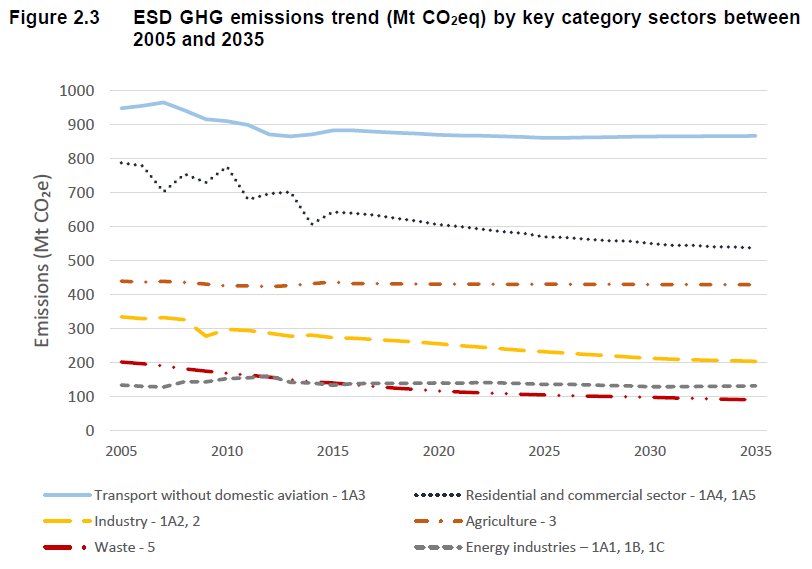
The EU Hydrogen Strategy is about scaling renewable hydrogen production to levels beyond current EU consumption levels for conventional fossil hydrogen. At 0.1% of current hydrogen production, we better get to it. 

Current hydrogen demand is largely concentrated in a handful of applications, in particular diesel fuel refining and ammonia production for fertilizers. 

Most of this H2 production is 'captive', meaning it is produced on site at the location of consumption. Some of it is produced as a by-product of other production processes, such as chlor-alkali production or coke oven gas. A small share is from separate 'merchant' producers. 

Due to the high share of 'captive' and 'by-product' uses of hydrogen, trade in H2 currently plays a very minor role. In 2019 the total amount of intra-and extra-EU H2 exports by EU countries amounted to 107 thousand tonnes, slightly more than 1% of total H2 consumption. 

So how are we doing in terms of scaling Power-to-Hydrogen projects? Well, but not well enough. The current known list of projects would only reach 36% of the 6GW of electrolysis foreseen by 2024 and 23% of the 40GW foreseen by 2030 in the EU Hydrogen Strategy. 

As impressive as all of the recent project announcements and the current project pipeline is, if all announced electrolysis projects foreseen by 2040 were realized, the EU would only be 50% towards its 2030 target of 40GW electrolysis capacity. 

The known project pipeline also shows a significant scaling over time, with 1.9GW to be realized 2020-2023 in 70 projects (AVG=27MW), 686 MW to be realized 2024-2025 in 18 projects (AVG=38 MW), and then an average project size of 165MW (2026-2027), 420MW (2028) and 788MW (2030). 

The country with the highest number of announced
electrolyser capacity is the Netherlands with 12.9
GW, followed by Spain with 2,3 GW, Germany
with 1,5 GW, Denmark with 1,5 GW, France
with 1,2 GW, and Portugal with 1 GW. These
countries represent 96% of planned capacity.
electrolyser capacity is the Netherlands with 12.9
GW, followed by Spain with 2,3 GW, Germany
with 1,5 GW, Denmark with 1,5 GW, France
with 1,2 GW, and Portugal with 1 GW. These
countries represent 96% of planned capacity.

A significant share of the capacity planned in the Netherlands is megaprojects not planned until after 2030. Nonetheless, announced
projects already comprise 87% of 3 GW and 65% of
its 4 GW 2030 target, relative to its 3-4 GW target.
projects already comprise 87% of 3 GW and 65% of
its 4 GW 2030 target, relative to its 3-4 GW target.

By contrast, Spain’s currently announced projects amount to 1.35 GW by 2030, 34% of Spain’s draft 4 GW 2030 objective. Germany’s current project pipeline of 1,405 MW by 2030 sets Germany at 28% of its 5 GW 2030 target.
With 991 MW, Portugal is at 40-50% of its 2-2.5 GW target for 2030 while its currently planned projects amount to 991 MW by 2030. France’s currently announced 839 MW in projects amount to only 13% of its 6.5GW target.
The number and size of projects differ significantly across countries, with Germany’s 1,548 MW composed of 34 projects reaching 46 MW average project capacity, while Denmark’s 1,454 MW is spread across eight
projects with an average project size of 182 MW.
projects with an average project size of 182 MW.
Where technologies are announced, more than two thirds of those projects plan to use the proton exchange membrane (PEM) technology, with 27.1% choosing alkaline electrolysis. The remaining 4.4% will involve solid oxide electrolysis (SO). 

However, as PEM is often chosen for relatively small projects, its share in total capacity is only 21.4%, while 76.0% of the capacity will be provided by alkaline and 2.5% by SO.
Where the electricity source for the projects has been announced 77% of announced capacity will be provided by wind power, while solar constitutes 14% of the announced capacity. Worryingly, however, the electricity source has only been announced for 82 of 151 projects. 

As for projects linked to fossil gas with CCS, there are at least 12 under development, with five are located in the UK, three in the Netherlands, and one each in Germany, Sweden, Norway, and Italy. 

The Porthos project in the Netherlands involve retrofitting an already existing H2 production plant and industrial processes with CCUS. The H-Vision project aims to develop fossil-H2 w/ CCS production capacity of 3.2 GW by 2030. These projects could abate 2-10 Mt of CO2 per year.
In Germany, the H2morrow aims to produce 8.6TWh of hydrogen for industry from Norwegian natural gas, potentially abating up to 1.9 million tonnes of CO2 per year.
These details and more can all be found in this extremely informative report by @H2Europe, which captures excellently the state of the industry, key upcoming regulatory discussions. More thoughts from me soon in separate threads.
https://twitter.com/H2Europe/status/1314230705786941442?s=20
• • •
Missing some Tweet in this thread? You can try to
force a refresh
















